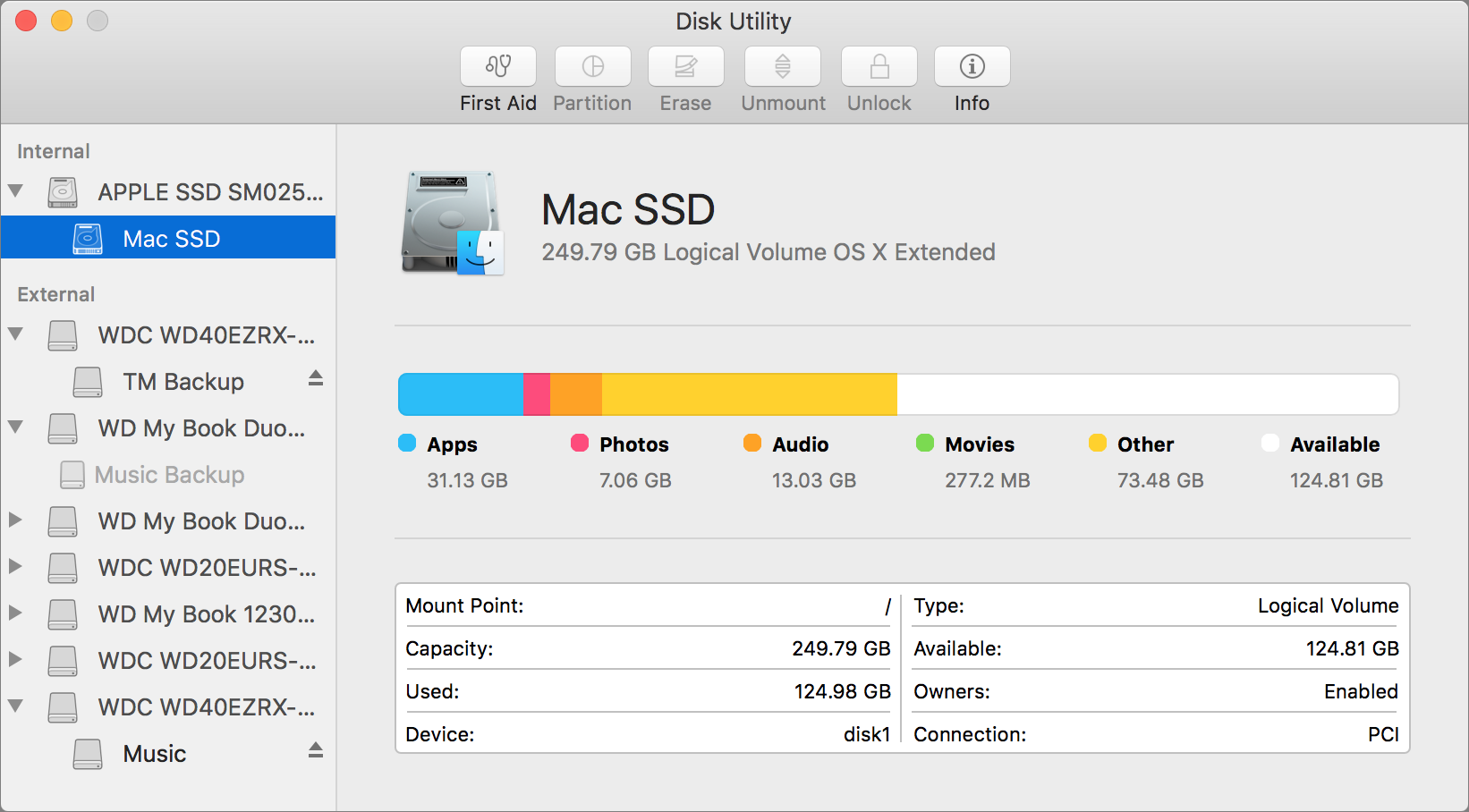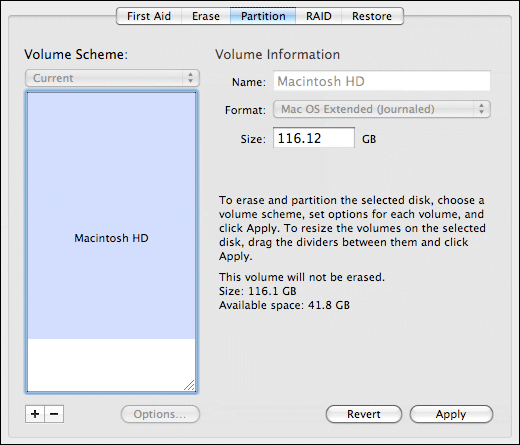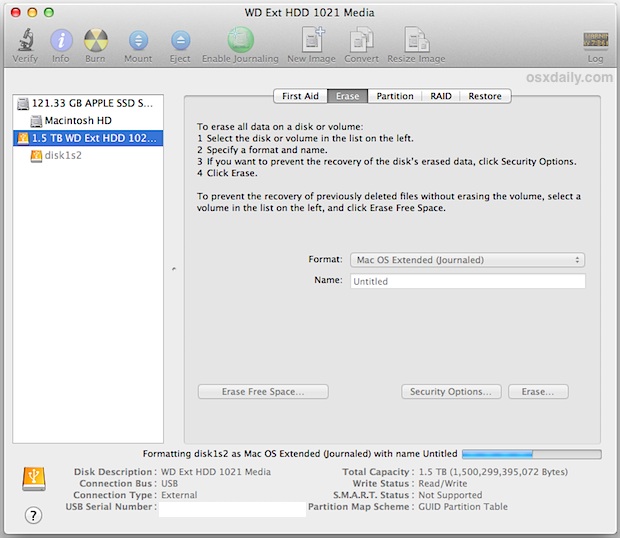For new users, personal Debian boxes, home systems, and othersingle-user setups, a single / partition (plusswap) is probably the easiest, simplest way to go. However, if yourpartition is larger than around 6GB, choose ext3 as your partitiontype. Ext2 partitions need periodic file system integrity checking,and this can cause delays during booting when the partition is large.
Apple’s Intel Macs no longer use Apple’s APT (Apple Partition Table) scheme and use GPT instead. You’ll probably want to use GPT when setting up a drive. It’s a more modern, robust standard that all computers are moving toward. As mentioned by the other comments, Apple's default partition scheme is to have everything on ONE partition. While not recommended (potentially due to not being easy to do), it is possible to move a home folder to a different partition. Here is how: Create a partition to use for the home folder (Disk Utility is the built-in choice to do so). They have different uses. GUID partition table (GOT) is the scheme used by servers, Macs, and many contemporary Windows PCs. MacOS on Intel will only boot from a drive with a GUID partition table, and Windows systems from 2005 on can read/write these disks but can only boot from them on systems with UEFI (instead of a BIOS). Nov 03, 2015 In that case, choose Master Boot Record for the Scheme. Click Erase, and Disk Utility will erase and format the drive. Partitioning a Drive. You may want to divide a drive into more than one partition. When you do this, each partition is a volume, and each volume shows up as a separate drive on your Mac. The Best Format for External Hard Drives If you want to format your external hard drive to work with Mac and Windows computers, you should use exFAT. With exFAT, you can store files of any size, and use it with any computer made in the last 20 years.


For multi-user systems or systems with lots of disk space, it's bestto put /var,/tmp, and /home each ontheir own partitions separate from the /partition.
You might need a separate /usr/local partition ifyou plan to install many programs that are not part of the Debiandistribution. If your machine will be a mail server, you might needto make /var/mail a separate partition. Often,putting /tmp on its own partition, for instance20–50MB, is a good idea. If you are setting up a server with lotsof user accounts, it's generally good to have a separate, large/home partition. In general, the partitioningsituation varies from computer to computer depending on its uses.
For very complex systems, you should see theMulti Disk HOWTO. This contains in-depth information, mostlyof interest to ISPs and people setting up servers.

With respect to the issue of swap partition size, there are manyviews. One rule of thumb which works well is to use as much swap asyou have system memory. It also shouldn't be smaller than 16MB, inmost cases. Of course, there are exceptions to these rules. If youare trying to solve 10000 simultaneous equations on a machine with256MB of memory, you may need a gigabyte (or more) of swap.
On some 32-bit architectures (m68k and PowerPC), themaximum size of a swap partition is 2GB. That should be enough fornearly any installation. However, if your swap requirements are thishigh, you should probably try to spread the swap across differentdisks (also called “spindles”) and, if possible, different SCSI orIDE channels. The kernel will balance swap usage between multipleswap partitions, giving better performance.
Mac Partition Type

As an example, an older home machine might have 32MB of RAM and a1.7GB IDE drive on /dev/sda. There might be a500MB partition for another operating system on/dev/sda1, a 32MB swap partition on/dev/sda3 and about 1.2GB on/dev/sda2 as the Linux partition.

How To Check Partition Scheme
For an idea of the space taken by tasksyou might be interested in adding after your system installation iscomplete, check Section D.2, “Disk Space Needed for Tasks”.



